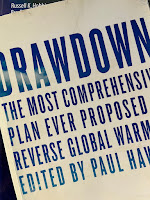 |
| Grimes DR (2021) Radiofrequency Radiation and Cancer, JAMA Oncology, 8:456–461. |
Importance Concerns over radiofrequency radiation (RFR) and carcinogenesis have long existed, and the advent of 5G mobile technology has seen a deluge of claims asserting that the new standard and RFR in general may be carcinogenic. For clinicians and researchers in the field, it is critical to address patient concerns on the topic and to be familiar with the existent evidence base.Many of Grimes’s conclusions are similar to those in Are Electromagnetic Fields Making Me Ill? and in Intermediate Physics for Medicine and Biology. I was particularly interested in the last few paragraphs of his discussion, where he examines the public perception of cell phone radiation health risks.
Observations This review considers potential biophysical mechanisms of cancer induction, elucidating mechanisms of electromagnetically induced DNA damage and placing RFR in appropriate context on the electromagnetic spectrum. The existent epidemiological evidence in humans and laboratory animals to date on the topic is also reviewed and discussed.
Conclusions and Relevance The evidence from these combined strands strongly indicates that claims of an RFR–cancer link are not supported by the current evidence base. Much of the research to date, however, has been undermined by methodological shortcomings, and there is a need for higher-quality future research endeavors. Finally, the role of fringe science and unsubstantiated claims in patient and public perception on this topic is highly relevant and must be carefully considered.
Public perception is also an important consideration, especially in the context of addressing patient fears. Given the combined biophysical and epidemiological evidence base to date against the proposition that RFR is carcinogenic, it might seem surprising that this belief is so widely evangelized and propagated relentlessly. A major and unedifying part of the reason for this is the noxious influence of fringe science on confounding public understanding; the BioInitiative Report, a nonscholarly [non-peer reviewed] work that insists that RFR causes many harms from cancer to autism, has been widely circulated since 2007. Despite its popularity, it has been repeatedly debunked by health bodies worldwide, and the attempts to treat its unsubstantiated assertions as equivalent to the weight of peer-reviewed weight of scientific evidence are archetypical false balance.Grimes has taken much criticism for his article, all of which, in my opinion, is undeserved. See, for example, this website containing an attack titled “Why did JAMA Oncology publish a paper written by a Telecom industry spokesperson?” by Joel Moskowitz (JAMA Oncology did no such thing). Several groups called for JAMA Oncology to retract Grimes’s article, but the journal refused (I’m proud of them). My advice for Grimes is to just be happy that people are paying attention to his work. Are Electromagnetic Fields Making Me Ill?, which covers much of the same ground and comes to similar conclusions, has not been similarly criticized, apparently because the critics are either unaware of it or don’t think it’s important enough to bother with.
Tellingly perhaps, the recent misinformation propagated around 5G is not even new—the same grave claims were made about prior mobile technologies for decades and were equally unsupported. Their renaissance now is underpinned by disinformation perpetuated across social media and a microcosm of a greater problem with online disinformation. There is, for example, a thriving online market for dubious devices that promise to protect consumers from RFR, furthering a likely misguided perception of harm. Cancer is an emotive topic, which undoubtedly increases the virulence of misguided assertions. It is accordingly important to be cognizant of the fact that while the issue may be strictly academic to researchers, it is a source of anxiety and apprehension to patients and the general public, and there is an onus on scientists to both convey the scientific consensus and to ensure that future work is conducted to a high standard.
The International Agency for Research on Cancer designation of RFR as a group 2B agent (a possible carcinogen) in 2011 is also frequently misunderstood as implying evidence of harm. However, such an interpretation is incorrect, as reiterated in the most recent International Agency for Research on Cancer communication in 2020, which stated that “despite considerable research efforts, no mechanism relevant for carcinogenesis has been consistently identified to date. In the past 5 years, epidemiological research on mobile phone use and tumours occurring in the head has slowed down compared with the previous decade. Most new and previous case-control studies do not indicate an association between mobile phone use and risk of glioma, meningioma, acoustic neuroma, pituitary tumours, or salivary gland tumours.”
It is worthwhile too to acknowledge a potentially political dimension to the propagation of falsehoods on 5G in particular; a New York Times investigation found that Russian state forces were complicit in spreading falsehoods, with the European Commission finding the fingerprints of both Russian and Chinese health disinformation rising with the advent of COVID-19, including false claims linking cancer to RFR. All of this undermines collective understanding and makes it imperative that scientists be at the vanguard of communicating the evidence to prevent detrimental misconceptions [my italics].
Grimes is an Irish scientist and science writer who won the 2014 John Maddox Prize for standing up for science and was elected a fellow of the Committee for Skeptical Inquiry. If you want to read more by him, I suggest his excellent book Good Thinking: Why Flawed Logic Puts Us All at Risk and How Critical Thinking Can Save the World.










